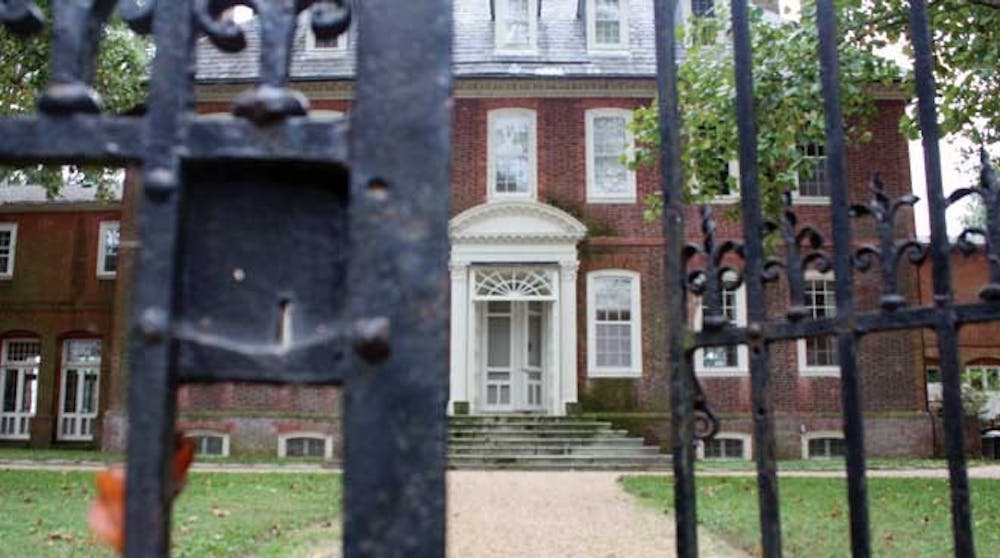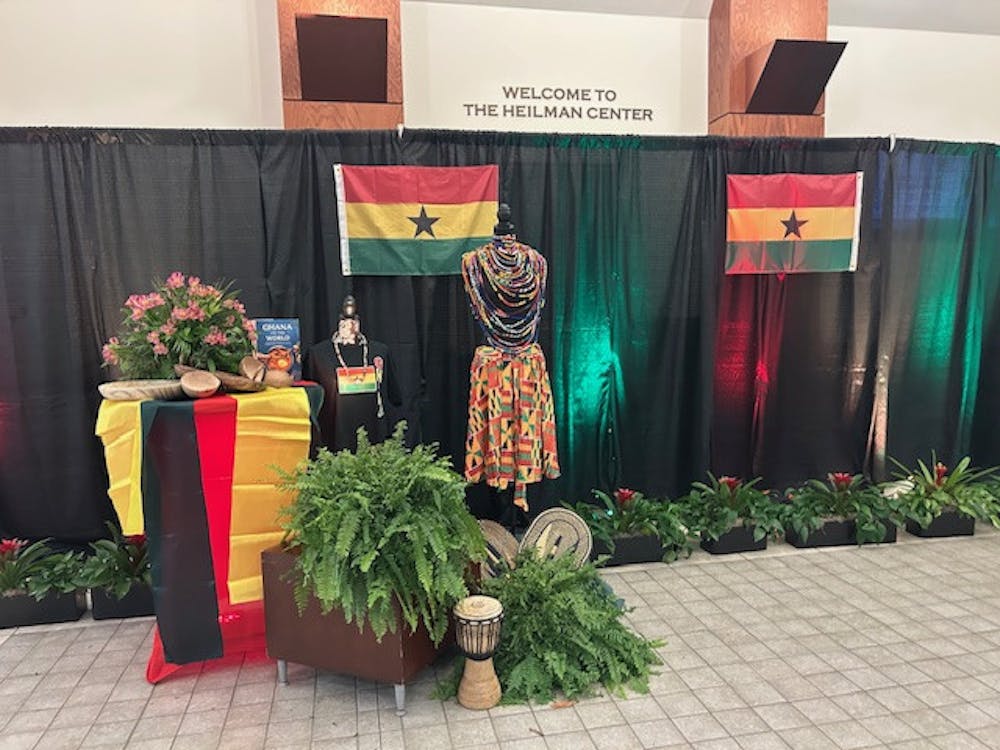Just about a 45-minute ride from campus, between the James and Chickahominy rivers, are several plantations that once were home to many notable Virginians, such as Declaration of Independence signer Benjamin Harrison and Presidents William Henry Harrison and John Tyler.
Berkeley, Edgewood, North Bend, Piney Grove at Southall, Sherwood Forest, Shirley, Westover, Belle Air and Kittiewan plantations are all in Charles City County. The county had been one of four original bureaus or incorporations that the London Company created in the Great Charter of the colony of Virginia, said Judith Ledbetter, director of the Charles City County Center for Local History.
"Although the dwellings themselves don't go back to that time period, the plantations as settlements do," Ledbetter said via phone. "If you're talking about Berkeley, Shirley and Westover, have had virtually continuous occupation for 400 years."
Ledbetter said that this made this grouping of plantations very unique.
"If you go to other parts of the country, particularly New England, you may find some very historic places, but to find three in a row in one county, all of which are national historic landmarks, all of which are open to the public, I think that's pretty special," Ledbetter said.
All the plantations are privately owned and operated, except Kittiewan, which is owned and operated by the Archeological Society of Virginia, Ledbetter said. Berkeley, Sherwood Forest, Westover and Shirley plantations are all National Historic Landmarks, Ledbetter said.
On my trip, I visited Westover plantation. Westover was established in 1619, and until recently the house was thought to have been built around 1730 by William Evelyn Byrd II, the founder of the City of Richmond, whose father had bought the land, Muschi Fisher said in a phone interview. Muschi and her husband, Frederick, have lived in the house for 32 years, she said. It is now believed that William Byrd III built the current house around 1750, Fisher said.
"We now tend to be a little vague and just say somewhere in the mid-18th century, because to me it's still not proven that that's really so, but a lot of pieces in the house point to 1750, which to me could have been added to spruce up the house sent down from Philadelphia, but nobody really knows," Fisher said.
The Fishers inherited the house from Richard and Ellen Douglas Crane, Frederick's grandparents, who bought the house in 1921, Fisher said. She said that they planned to move out in two years when their daughter and her family had moved in.
Fisher said this was the first generation to really be living a modern life, taking care of the grounds without a lot of staff. She and her husband, and one groundskeeper maintain the property, she said.
"There are a lot of short-comings in an aged house, there are no clean corners and a lot of spiders coming in, but it's a fun house," Fisher said. "It's a beautiful house, but it's a lot of work and it's a constant concern. ...There is always work. You just thought yourself finished cleaning up somewhat and something happens."
The house is not open, except by special appointment, because it is the Fisher's full-time home. The grounds and garden are open from 9 a.m. to 6 p.m. daily.
Enjoy what you're reading?
Signup for our newsletter
To reach Westover, I took Route 5 out of Richmond until I reached Herring Creek Road, which turned into Westover Road. At some point, the pavement turned into gravel and I was forced to slow down to a 10 mph crawl, allowing me time to appreciate the fields and trees surrounding the road. Look out for geese. At one point, my car was cornered and one goose actually pecked at my car!
After parking, I walked to a gate, where I found a self-guide pamphlet, which still stated that William Byrd II had built the house. As I walked through the gate, on my right was a majestic and unpolluted vista of the James River. The house's riverside location was important for commercial reasons and for social reasons, said Margaret Denton, an art history professor at Richmond, who has taken students to Westover as part of the Art of the United States class.
She said to witness the kind of extraordinary presence of the main house as you came up the river would have been extremely important to the plantation owners, and that with this house, Bryd established a lifestyle of taste.
"They're isolated and have to create their own little world, places of elegant entertainment, a cultural center," Denton said.
On my left was the old kitchen building, which Ledbetter said was barely antebellum. Also visible was the large brick facade of the main house. Denton said Westover was important for its distinct architecture and because it didn't have an architect.
"This marks a change from the 17th century forms in Virginia when people replicated what they knew in England: houses and churches with medieval features," she said. "It is one of the best examples of the early Georgian style in America. It is a product of taste with attention paid to symmetry and balance."
Byrd, who lived much of his life in England, was familiar with the grand houses he saw there and owned a collection of architectural books that were useful as sources for designs and details, Denton said, and many elements, such as the stone doorways, had been imported from England.
"It's surprising how elegant these houses were, because they had to work with the materials and craftspeople available," Denton said. "He couldn't build a stone house here, so it was brick."
Past the front of the building and off to the side is the Indian Well House. The dry well, which you can peer down into (don't worry it's well-lit and there are hand rails), was once connected to a tunnel that goes under the lawn and exits at the riverbank. In 1622, Indians killed one-third of the population in the area between Jamestown and Henrico in a series of raids, Fisher said. Some people built tunnels in case it happened again, which it didn't, Fisher said.
"From the river-side, when my husband was 10 or so, with a friend, he tried to go down it on his knees and couldn't go very far," she said. "It probably wasn't very safe."
Continuing back around the house is a horse stable where the Fishers have several horses, including two old Arabians and an old racehorse with a bad knee, Fisher said. Only one of the horses and a pony are ride-able, she said. I saw a few of them, including the pony, which she said her three grandchildren enjoyed riding.
"Mr. Crane had the left-over Arabian horse stud farm, and he was raising Arabians here," Fisher said. "We used to have eight horses we rode around, but we're 70 now and we just don't get on a horse particularly anymore."
Near that is the old Necessary House, which the plaque said was an 18th-century privy, and that this was a "rare example of a comfortable five-holer with a fireplace." The three holes across from the fireplace are supported by a brick arch down below, Fisher said.
When I asked whether or not she could imagine using the necessary she said: "Sure, of course. You would too if there was nothing else. It's better than squatting in the woods. I always say, if there was a cold day in the winter, and they had a good fire going, I think every hole was occupied even the basic latrine, as they sat there and told stories and jokes, and had a great time. Privacy was quite different from what we have now, everybody needs their own space."
After a quick look around the small privy, I continued back around the house and stopped at what during the time of both William Byrd II and III, was the carriage entrance. Fisher said William Byrd II had the gate, and two smaller gates, made in London and shipped over. The lead eagles on the gateposts were a play on the name Byrd, and face the river because that was the main entrance, Fisher said.
Past the gate, and a modern swing set, is the entrance to the formal garden. Walking through, I saw plenty of flowers blooming, and a flock of cardinals. Most of the trees were still green, and Ledbetter said that they usually changed after a good cold snap.
Fisher said, William Byrd II definitely had a garden there that was fairly formal, but during the "war between the states, everything was sort of marauded and abused and destroyed."
In 1898, Byrd descendant Clarise Sears Ramsey resurrected the garden and financed renovations to the house. Fisher said Ramsey had been the first person to really have money after the war to dedicate to the house.
At the crossroads of the gardens is William Byrd II's tomb, which Fisher said he had made in London. The tomb is engraved with the intriguing epitaph, "Black Swan of Westover." Byrd was buried there in 1744.
That concluded the walk around the plantation. To the right of the parking lot, and a quarter-mile down a grass road is the site of what was once Westover Church. Buried there are William Byrd II's daughter, Evelyn Byrd, and William Byrd I and his wife. The plantation is still a working farm with about 400 of the approximately 1,000 acres still cultivated, Fisher said. Huge silos loom behind the cemetery.
There was no mention of slaves, slavery or slave quarters at Westover plantation. Fisher and Ledbetter both said this was because there was no architectural evidence left and that there has been no archeological research done on this plantation. I also visited Shirley plantation, where a lot of research has been done on where the slaves lived and what types of work they did.
Denton said she had noticed that slavery and slave quarters weren't addressed at Westover, and said that this had also occurred at other privately owned plantations.
"Architecture scholars tend to just emphasize the main house," Denton said. "At places like Williamsburg, they now focus on who else lived there. ...At Monticello they really focus on the lives of Jefferson's slaves. The integration of other narratives is beginning to be developed better, but perhaps not as much on these other houses that are private residences."
From an architectural perspective, this plantation, and the other plantations in Charles City are part of the large variety of important buildings in Virginia that students should see, Denton said.
"It's astounding what students have around them," Denton said. "We're so lucky there's so much for students to see."
Contact staff writer Elizabeth Ygartua at elizabeth.ygartua@richmond.edu
Support independent student media
You can make a tax-deductible donation by clicking the button below, which takes you to our secure PayPal account. The page is set up to receive contributions in whatever amount you designate. We look forward to using the money we raise to further our mission of providing honest and accurate information to students, faculty, staff, alumni and others in the general public.
Donate Now



